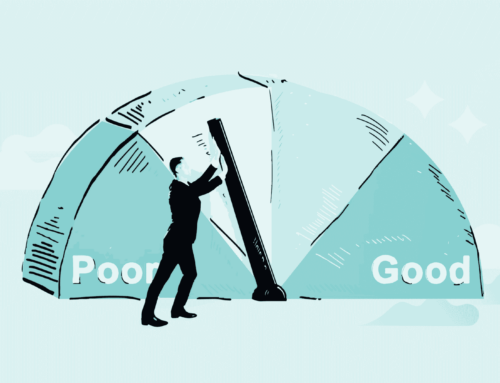There may be a time in your life where you need to borrow money, whether that means upgrading to a spanking new car, purchasing a new home with your partner, or furthering your education with a student loan. So, let’s say you’ve done your research – the price looks good, the interest rate looks excellent, and you’re prepared to sign the contracts and do the paperwork. But have you checked your Annual Percentage Rate first?
Don’t worry; these terms may all seem a little confusing. But we’ve got you covered. Check out everything you need to know about your APR, how it works and what is considered a reasonable interest rate.
What Is Annual Percentage Rate (APR)?
When you obtain a loan, a credit card, or any other line of credit, you pay an annual percentage rate (APR). It’s represented as a percentage of the total balance you must pay and is charged every year you have the loan. The APR is calculated before compound interest is considered, too.
Depending on how much you can afford to pay back, an interest rate can quickly raise the total cost of your loan. At times, if you don’t realize you’re paying an interest rate on top of your regular loan payments, you may find your loan could become unaffordable and outside your desired budget. Therefore, it’s essential to know a card or loan’s APR to allow you to compare offers. In addition, it will help you see the trust cost of your loan or line of credit.
The Difference Between Fixed vs. Variable APR
It’s essential to know if your loan is fixed vs variable when searching for the right product for you. In definition, a fixed APR does not change over time. This means your APR would be the same for the entirety of the loan. A variable rate is an APR that CAN change over time. If your APR is unstable, it will rise and fall when you have an active loan. Generally, you will see a variable rate on credit card products.
It’s important to note that your card issuer may change your fixed-rate, but they will need to notify you at least 45 days in advance beforehand.
How Does APR Work?
Whether you decide to borrow money through a credit card, a loan or any other line of credit, interest rates will apply to your repayments. When figuring out the total cost of your loan, the APR will help discover the total rate you pay each year for that loan or credit balance.
The Difference Between APR vs. Interest Rates
We all know that there’s a difference between an interest rate and APR. Sometimes, it’s too easy to pile the two together and forget. But not knowing the difference between the two could end up costing you a lot of money. Even if you’re struggling to comprehend the difference between an interest rate and APR, always check what they are signing up for a loan.
Firstly, to understand APR, you must understand interest rates. For example, let’s say you’re purchasing a new home for $250,000 with an interest rate of 5%. So, what does this mean? Well, at the start of your home loan, your mortgage will build 5% in interest every year. So, annually, your interest will be equal to approximately $12,500.
When calculating your APR, this figure will include prepaid interest, your private mortgage insurance, and any other fees. That’s why your APR is generally a higher figure than your interest rate. So, when shopping around for loans or any financial product, always be sure to compare your APR over your interest rate. Your APR is the final extra amount you will pay on top of your agreed loan.
What Is Considered A Good APR?
When your financial institution evaluates your loan or credit application and decides on an APR, they assess a few factors. Generally, your APR will depend on what type of loan product you have. Your potential lender considers the following factors to calculate your APR.
- Prime rate: This rate is set by the banks, which is charged to their ideal customers. You have no control over this rate, and it is tied to the federal funds rate.
- Credit Score & History: Before obtaining any financial product, your potential lender will look at your credit score and history. This three-digit number is a snapshot of how you have handled credit in the past—the higher the credit score, the lower the interest rate. But don’t worry, you can learn how to improve this score by signing up for a MyMarble Premium membership here.
- How much your down payment is: By making a larger down payment, you can reduce your APR.
- The total length of loan: It’s often the shorter the loan term, the lower your APR will be.
- Current income and job history: If you don’t have a steady income at the moment, you may be charged a higher APR or even declined.
So now you know what lenders are looking out for when calculating your APR; how do you know if your offer is competitive? Of course, every loan provider is different and will have a different prime rate too. As a guide, try to find a loan with an interest rate between 9 – 10%. In addition, according to RateHub.ca, 12.99% would be a below-average rate, and 19.99% would be more typical.
How To Calculate APR?
To calculate the APR on your loan, you need to know; the total cost of credit, the terms in years and the average principal balance outstanding. Check out below to see how it’s calculated.
- APR = (TCC x 100) / (T * P)
- What does each of these terms mean?
– TCC = total cost of credit
– T = term in years
– P = Average principal balance outstanding - It’s important to note that there are various rules across Canadian provinces for how the average principal balance outstanding is calculated.
Useful Definitions:
- Interest rate: The amount charged as interest for a loan, typically expressed as an annual percentage of the outstanding loan.
- Annual percentage rate (APR): The rate you pay on a loan for a year, plus the costs associated with the loan.
- Annual interest rate (AIR): AIR is the average amount of interest, expressed as a percentage, that you pay on a loan each year. To calculate, divide the total interest amount by the loan amount and the number of years you borrow the money.






